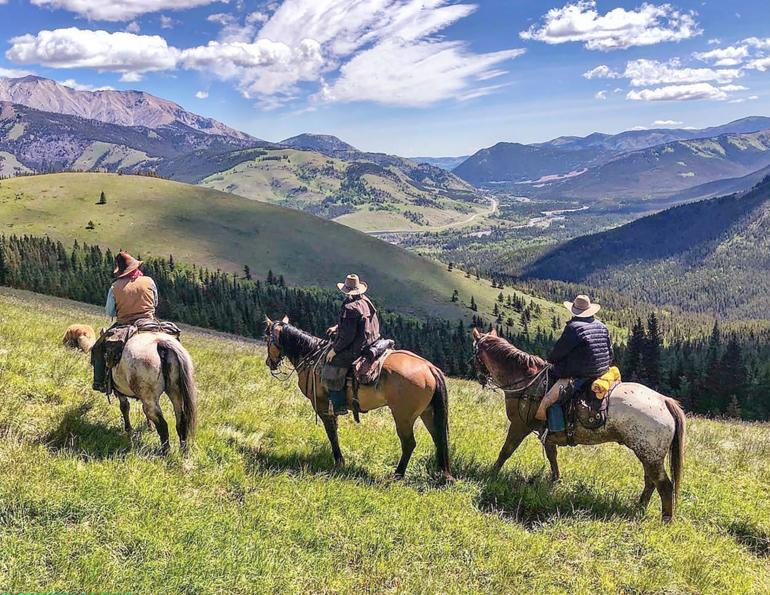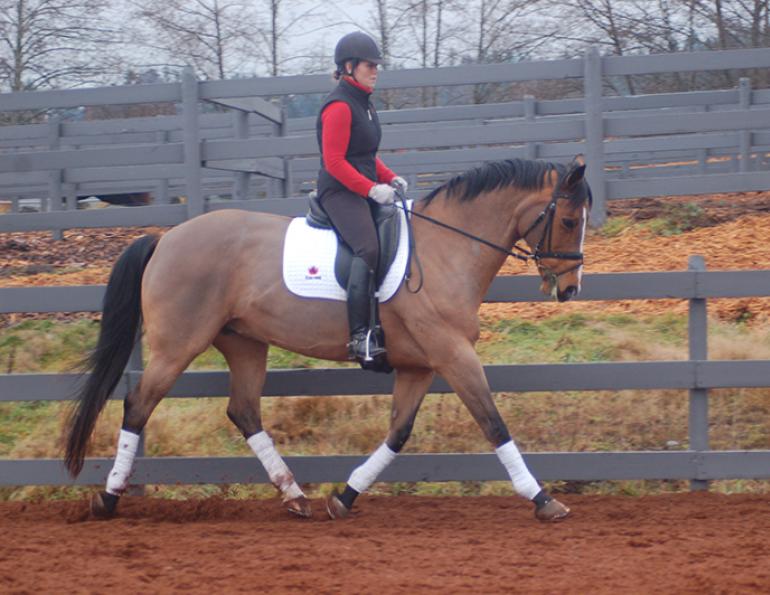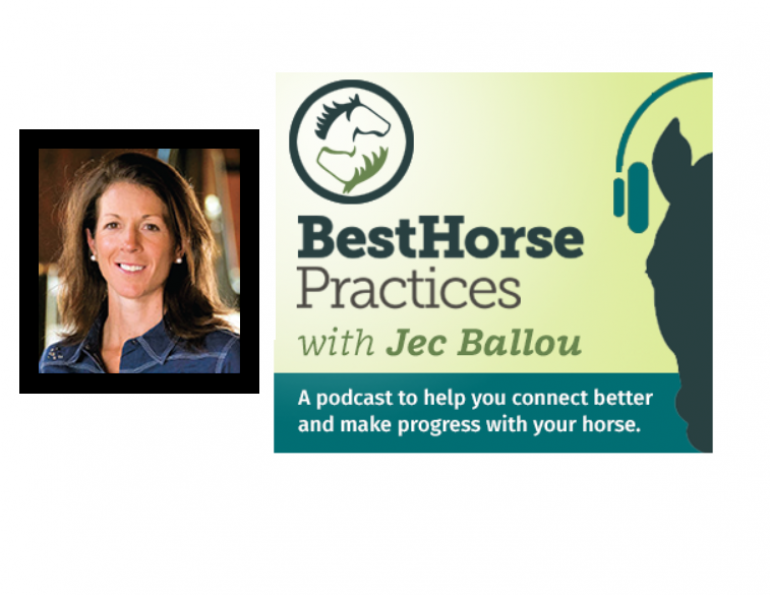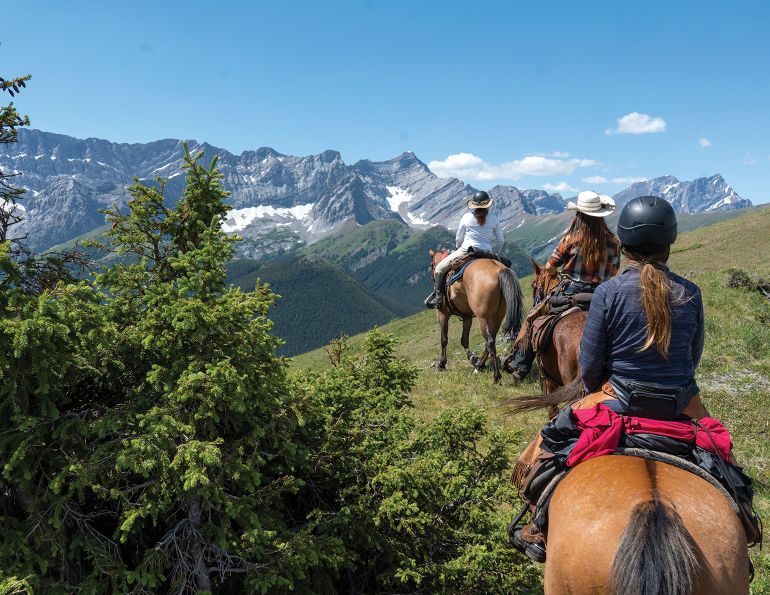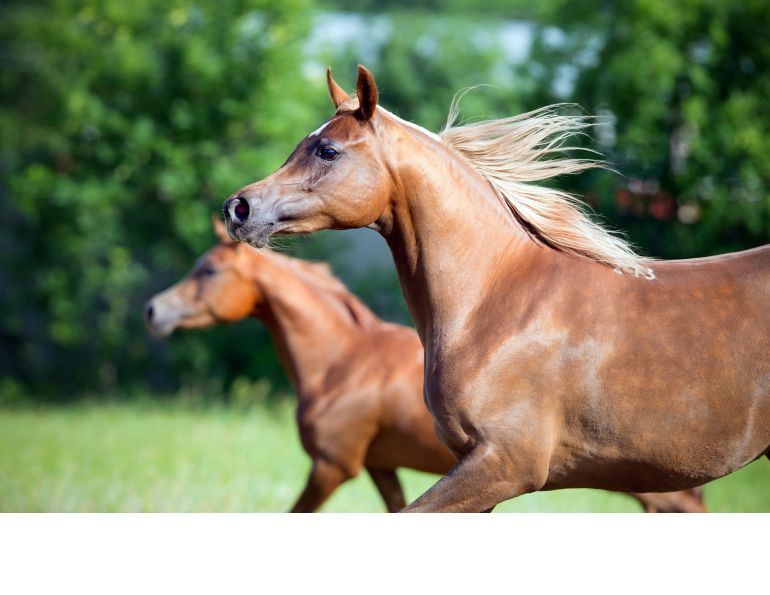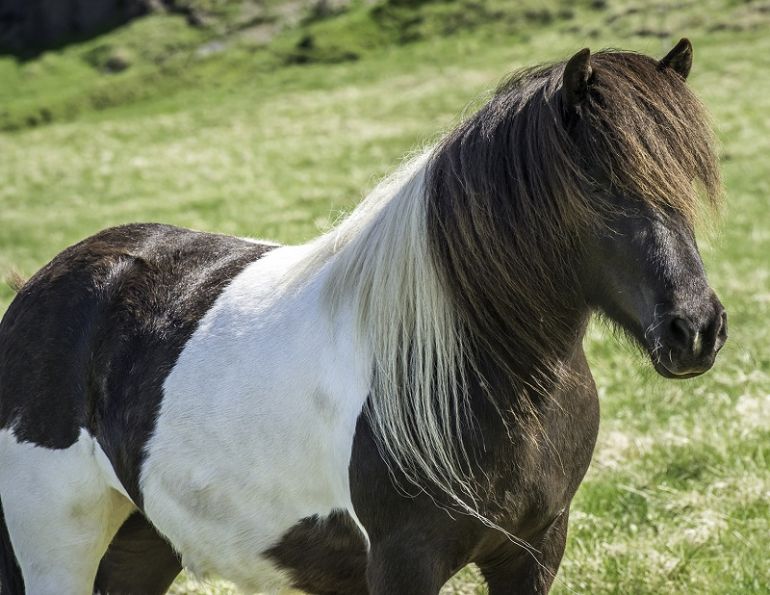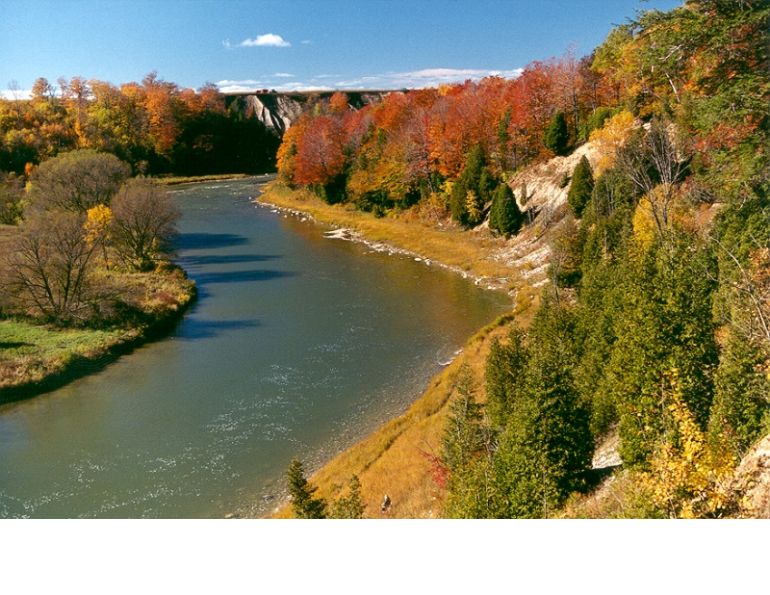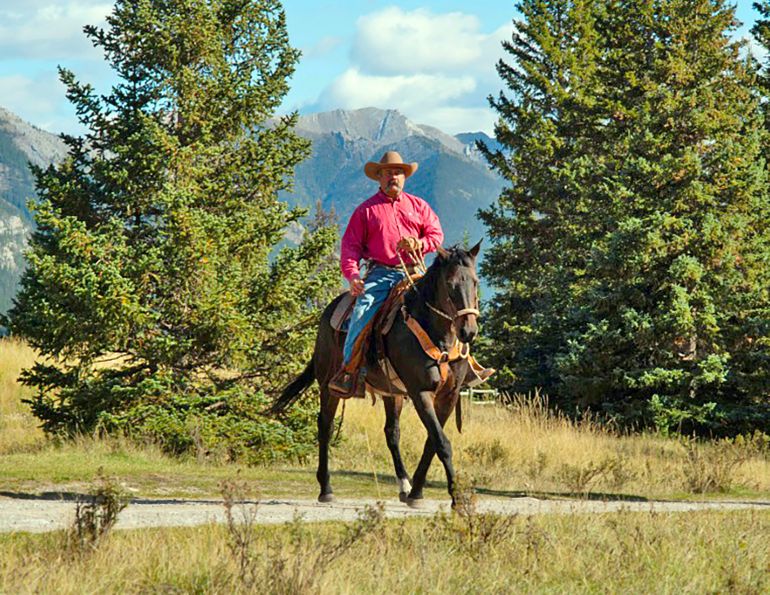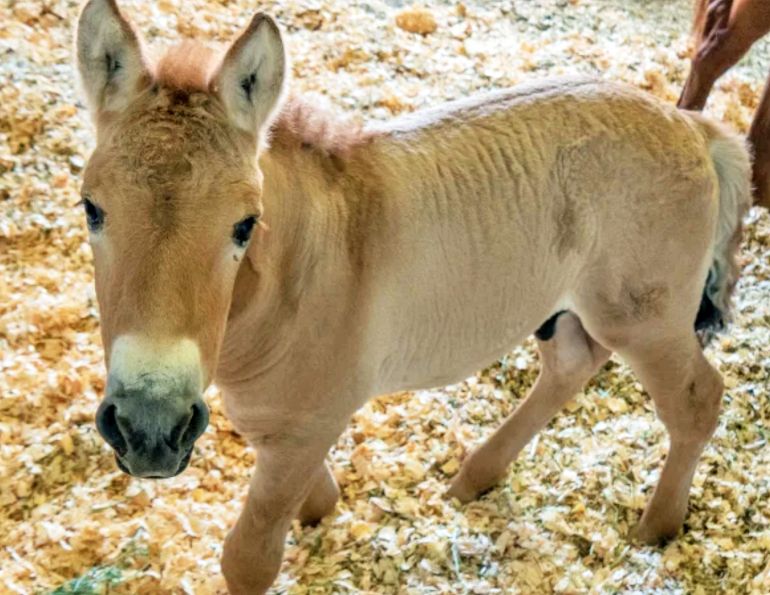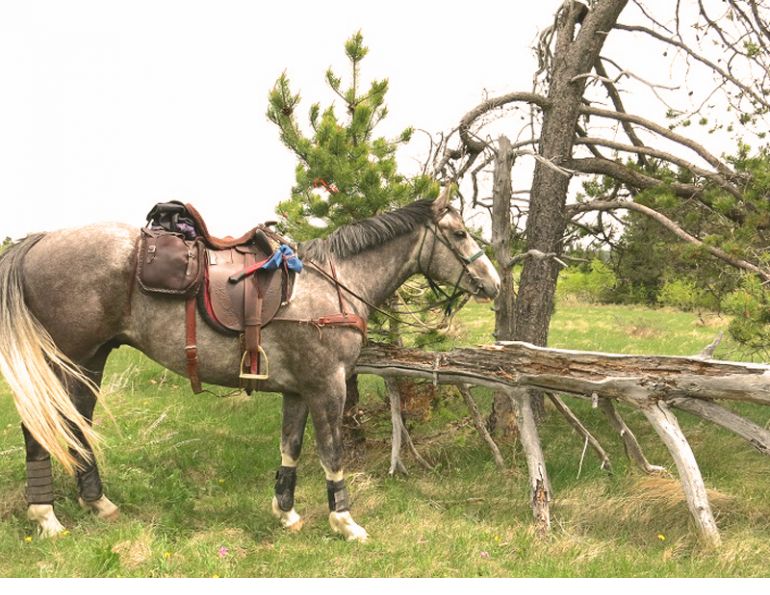Holidays on Horseback
By Shawn Hamilton
In India one can view the countryside through the heart-shaped ears of the Marwari horse. In Mongolia a small, strong Mongol horse will carry you through the desert lands. And the short, hardy Icelandic horse will smoothly tölt you along the rugged trails of Iceland.
Native breeds possess characteristics suitable for their local climate and terrain. As such, I expected when arriving in South Wales for a seven-day ride that a string of native Welsh ponies would be tacked up and waiting for their riders. Yet to my surprise, Gypsy Cob horses were saddled and ready to carry us down the rocky cliffs to the sandy beaches below. When I asked the outfitter why he chose the Gypsy Cob, often referred to as the people-sized draft horse, over the native Welsh, he explained, “They can carry the heavier tourists and handle the rough terrain.”
This made me wonder why certain trekking companies choose particular breeds for their operation. Some outfitters operate their own breeding programs to produce a specific type of horse to handle the trekking work. I asked several outfitters about the characteristics they look for in a mount that will not only safely transport their clients through the local landscape, but stay sound and healthy throughout the season, and be willing and content in their work.
Angie Lackey and John Wall, owners of Adventure Horse Trekking New Zealand, breed a specific type of draft cross. They have their own breeding program that combines either a Shire or Clydesdale with a Thoroughbred or Standardbred. They have had great success in replicating the old Stationbred horse originally bred by the pioneers. This breed fulfilled many duties including ploughing the fields of the high country, pulling a carriage to town for supplies, taking the kids to school on weekdays, and galloping across fields and over fences on weekend hunts. It’s a tall order for one breed, but as Lackey says: “These horses are such great all-rounders. They suit the terrain perfectly and have proven themselves time and again.”
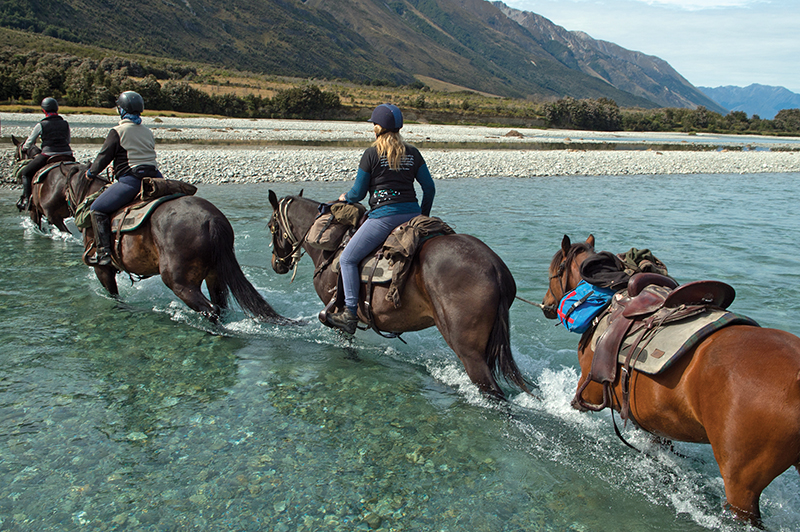
By the end of the season the horses at Adventure Horse Trekking New Zealand have travelled about 3,500 kms across the varied ter-rain of New Zealand’s South Island. Photo: Clix Photography
The breeding program at their farm in the Waihaorunga Valley in Aotearoa South Island has been underway for 15 years now.
“Our horses live wild and free on our farm with both parents in a secure family environment,” says Lackie. She and John firmly believe that this situation gives the herd a deep sense of contentment, and that watching their mothers, brothers, sisters, aunts, and uncles going to work in the trekking string prepares them for their entry into working life. “It is the norm for them,” she says.

“Our adventure horses have kind eyes, big hearts, strong sure-footedness, and willing hearts,” says Angie Lackey of Adventure Horse Trekking New Zealand. Photo: Clix Photography
By the end of a typical season the team of humans and horses have covered approximately 3,500 kms in the mountains, rivers, and lakes of the high country of New Zealand’s South Island.
Lackie’s description of their herd says it all: “Our adventure horses have kind eyes, big hearts, strong sure-footedness, and willing hearts to share adventures with our customers from all over the globe.”
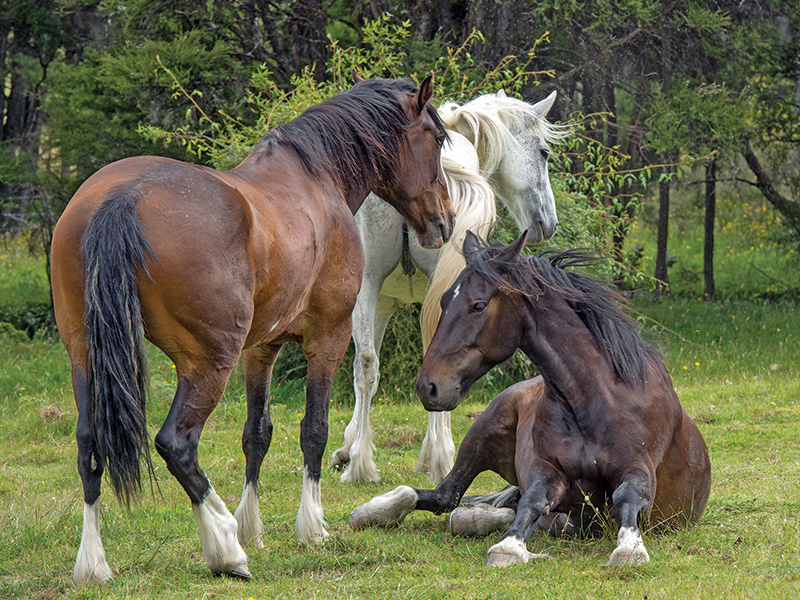
The breeding program at Adventure Horse Trekking New Zealand com-bines a Shire or Clydesdale with a Thoroughbred or Standardbred to replicate the Stationbred horse originally bred by pioneers in the area. Photo: Clix Photography
Dewy Matthews of Anchor D Guiding & Outfitting, a trekking business that has operated for 38 years in the Kananaskis region of Alberta, also breeds his own stock. Drafts, such as Belgians or Percherons, crossed with Quarter Horses or Appaloosas are Matthews’ preference. For ease of foaling out, he prefers the draft to be the mare’s side. When asked what the draft brings to the equation he says: “The draft provides a good disposition as well as good bones and feet for the rugged terrain.”
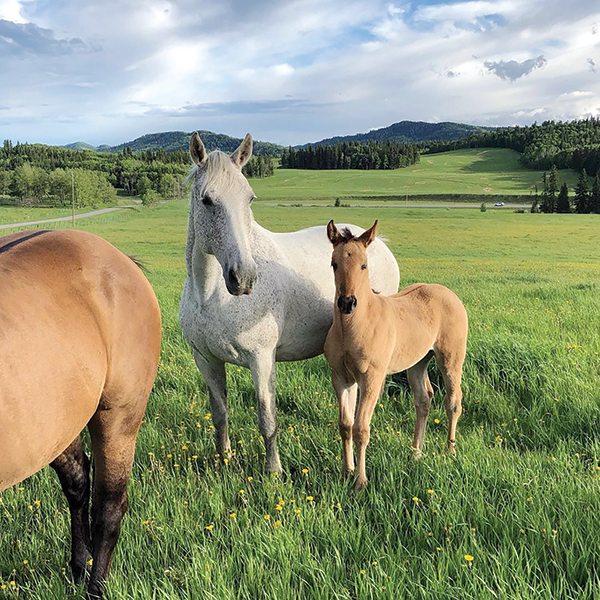
Dewy Matthews at Anchor D Guiding & Outfitting crosses drafts with Quarter Horses or Appaloosas to produce strong, sensible mounts for a diverse range of clients. Photo: Anchor D Facebook
Along with strength, the draft helps to produce a reasonably-sized horse. In Matthews’ typical humour, he explains: “You can always put a smaller person on a bigger horse but where we go in the mountains I don’t like putting a larger person on a smaller horse — and they seem to be making people bigger these days.”
Matthews reflects on his trip to the Grand Canyon and a mule ride down to Phantom Ranch; he says their weight restriction was 200 pounds maximum. “If I adopted that policy I would lose about 40 percent of my business.”
Matthews prefers draft crosses for their temperament as well. “The draft cross results in a laid-back horse that is still handy — you can put a six-year-old on most of them for a morning ride, then go rope a bull from the same horse in the afternoon.”
Related: How to Choose Your Perfect Horseback Riding Vacation
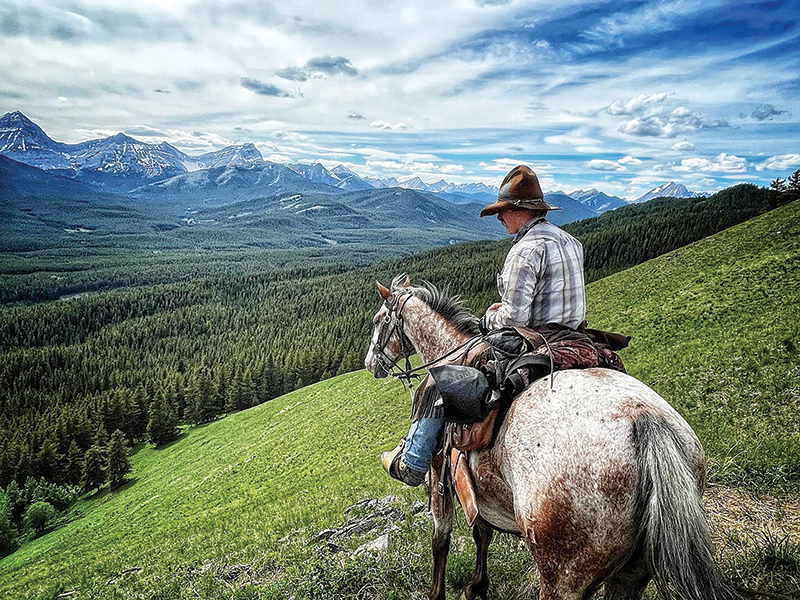
The draft side of the breeding program at Anchor D Guiding & Out-fitting provides a laid-back temperament, strength, and a good-sized horse. The Quarter Horse or Appaloosa side brings stamina and athleticism for rough terrain. Photo: Anchor D Facebook
The stallion provides the athleticism necessary for the long rides and rough terrain. Matthews keeps a foundation style Quarter Horse stallion from the Poco Bueno line. Poco Bueno, Spanish for “pretty good,” was born in 1944 and lived to be 25 years old. During his lifetime he sired 405 registered foals, 36 of which became American Quarter Horse Association (AQHA) champions. This stud was known for producing easy-to-handle, gentle, smart offspring, and was inducted into the AQHA Hall of Fame in 1990.
Matthews describes his Quarter Horse stallion as solid with a great mind, which he passes to his babies. Crossing with a combination of pure- and part-bred draft mares, as well as saddle horse mares, produces a variety of sizes in his herd. As much as he needs the larger horses to carry heavier clients, he also needs smaller athletic horses for the tiny women, youth, and older riders whose hips can’t handle the width of the chunkier drafts. Another important consideration in a trekking horse is good withers. A horse with good withers holds the saddle much better “and you don’t have to cut them in half with the cinch,” he explains.
Matthews takes great care in pairing the right horse with each client. “When I pick a horse for a guest at the start of a trip, I tell them I want to mount them on a horse they like so much they’ll consider stealing it at the end of the ride.”
Although he hasn’t had any horses stolen yet, Matthews does have a long waiting list of clients ready to buy his retired mounts.
Uschi Jenny, the Canadian manager of Rancho Las Cascadas in Central Mexico, prefers two breeds for their clients: Criollo and Quarter Horse. The Criollo, originating from the Andalusian brought by the Spanish conquerors and known for its great strength and hardiness, provides the stamina needed for their long-distance rides, as well as adaptability. “They adapt well to different situations, are calm and reliable, and make perfect mounts for exploring the Mexican highlands,” says Jenny.

Rancho Las Cascadas in Mexico prefers Criollo and Quarter Horse breeds. They do not have their own breeding program and source their horses from ranchers in the area. Photos: Clix Photography
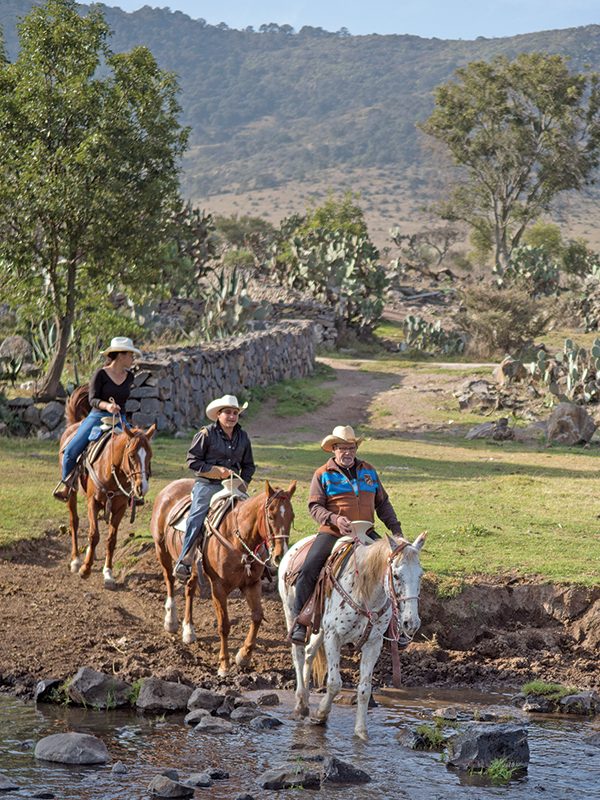
Jenny explains why they prefer the Quarter Horse for beginner riders: “They are sure-footed and agile. They have a calm, steady temperament. Because they are quick learners it is easy to train them and with little guidance from the rider they understand their job. These characteristics make them ideal for carrying a beginner on a ride through the open ranges of Mexico.”
The ranch’s herd consists of stallions and geldings only. They do not have their own breeding program and don’t have to go far to find candidates for their string.
“They just show up at our front door,” Jenny says. “Most of the ranchers in the region know that if they have a good horse, Rancho Las Cascadas will buy it. The locals come to us when they want to sell.”
Related: Checklist for a Comfortable Riding Vacation
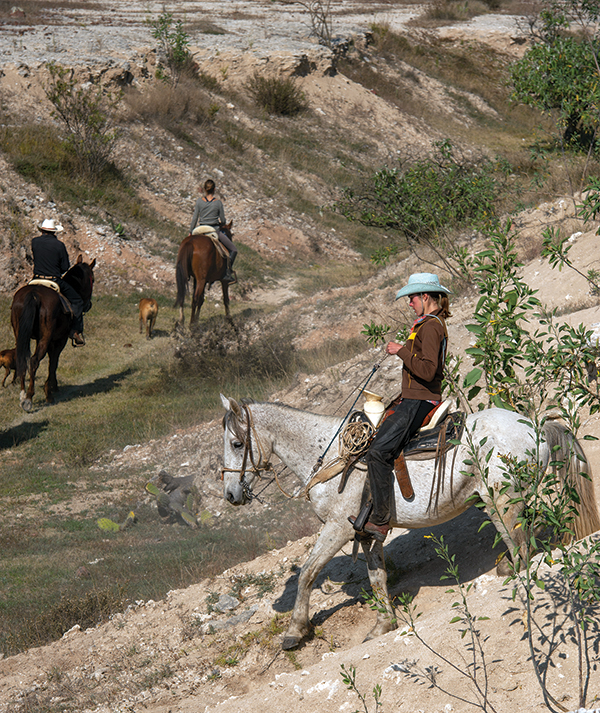
Quarter Horses are preferred for beginner riders at Rancho Las Cascadas thanks to their sure-footedness and calm temperaments. Photo: Clix Photography
Bobbi Wade, owner of Blue Sky Sage Horseback Riding Retreats in Wyoming, and Peter De Cabooter, owner of The Hideout Lodge & Guest Ranch with his wife Marijn, also situated in Wyoming, look for quality and characteristics over breed, and their strings contain mostly Quarter Horses with some Mustangs.
Wade tends to prefer the foundation-type Quarter Horse, but some Mustangs and smaller Quarter Horse-draft crosses are also in her string. Her ideal horse is, “handy on their feet, but not too quick and explosive, with a quiet disposition.” She looks for heavier-boned horses with a front shoe at least a size one, but high on her list of qualities is a good mind and a kind, prominent eye. They must have the mind and heart to do the job, she explains.
Wade avoids horses that might be hard keepers or are nervous and high strung, as well as horses with the potential to become overweight easily.
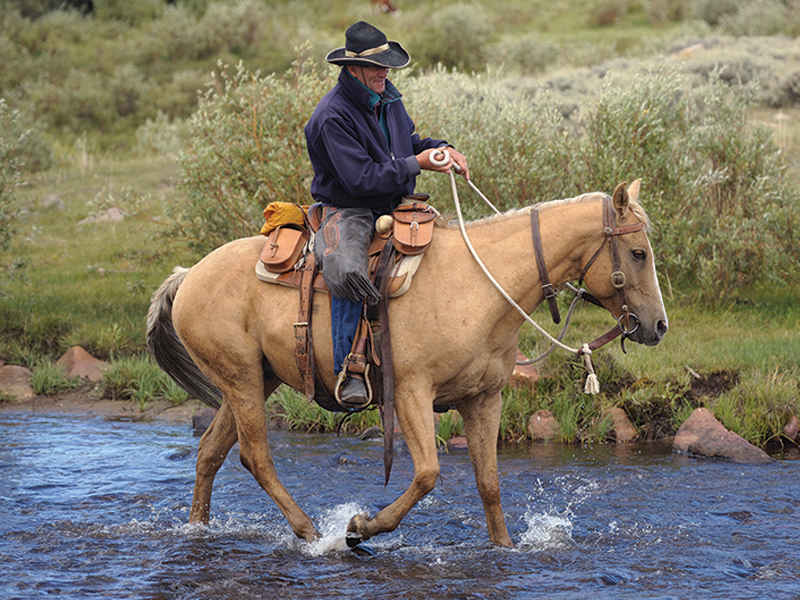
The ideal horse for Blue Sky Sage Horseback Riding Retreats is handy, quiet, and kind, with good feet. They favour easy keepers without the potential to become overweight easily. Photos: Clix Photography
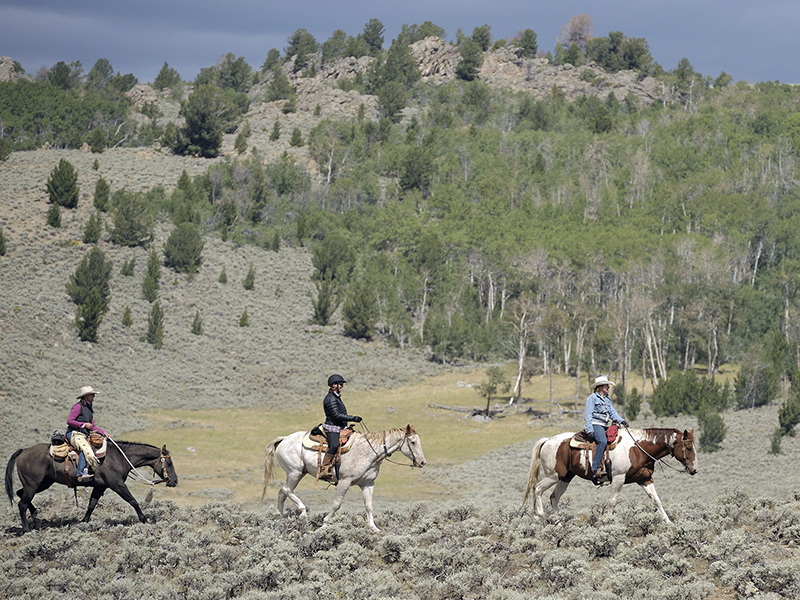
The Hideout Lodge & Guest Ranch herd consists of mostly Quarter Horses, Quarter Horse crosses, and Mustangs. De Cabooter looks for specific qualities in the horses that will carry clients safely through the vast trails outside of Shell, Wyoming. The horses should be solid and well-balanced, and calm with good dispositions making them adaptable to many riders. They should also be low maintenance in terms of hoof care and general health. De Cabooter’s team also looks for good withers and a strong back.
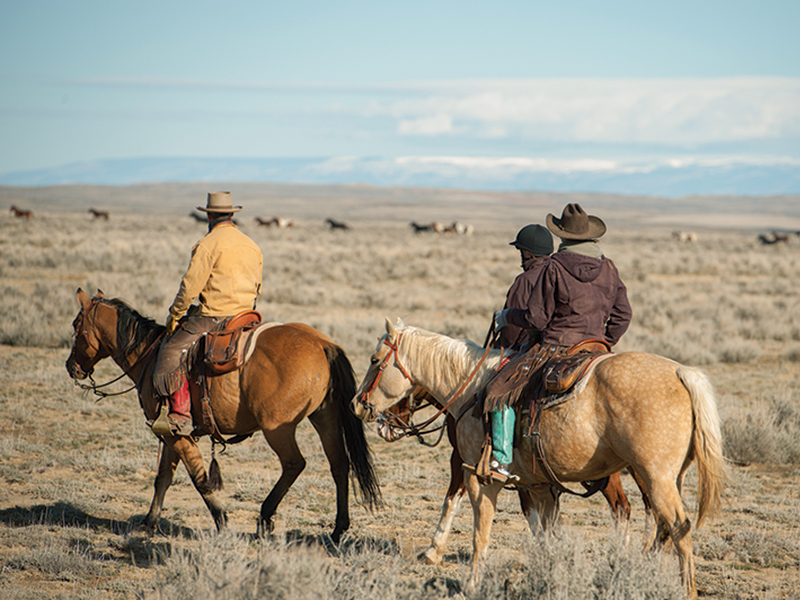
Riding out to see the wild horses at The Hideout Guest Ranch and Lodge. The horses in The Hideout string must be able to get along with other horses and live in a herd. Photo: Clix Photography
One of the factors De Cabooter considers is how the horse was living previously.
“Our horses have to be able to live in a big herd,” he explains. “Many of the horses that spend their lives in a stall and don’t get out with other horses often have problems in a herd. It is hard for them to find buddies. For that reason, Mustangs and ranch horses that are raised in a herd and a bigger string of horses adapt better here. They know the drill and how to stay out of trouble.”
De Cabooter says if a horse has certain characteristics that are good for the job they will enjoy their career and have the ability to handle the work, both mentally and physically, throughout the season.
“It is important that they are consistent in their temperament and behaviour. They have to have a lot of heart and soul. The ideal horse is enjoyable for beginner, intermediate, and advanced riders.”
As far as a breeding program goes, De Cabooter explains that if they have a good mare that likes and understands her job they will consider breeding her, as “often the characteristics of the mare will carry to the foal.”
Related: The Barn Owner's Vacation Checklist
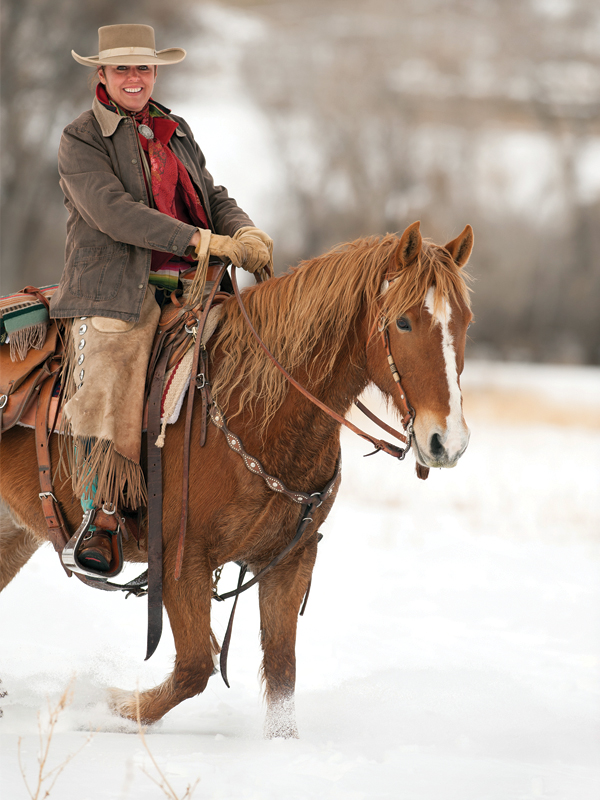
Marijn De Cabooter co-owns The Hideout Lodge & Guest Ranch with her husband, Peter. Photo: Clix Photography
A youngster may be a great horse but may not have the qualities necessary for this particular type of work. For this reason, De Cabooter looks for a better fit. He has struggled to find the perfect breeder to source from, and invests in gentling, starting, and training young horses. A horse does not go into the string until it is at least five or six years of age and has been handled by experienced trainers. All wranglers at The Hideout adopt the same philosophy when it comes to training and the entire herd is treated in the same professional, respectful, and consistent way.
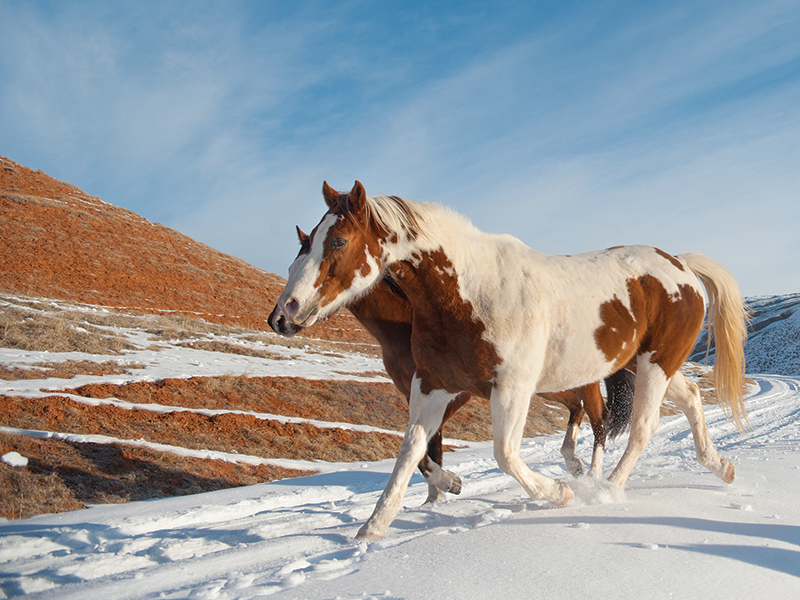
Quarter Horses, Quarter Horse crosses, and Mustangs comprise the string at The Hideout Lodge & Guest Ranch. Photo: Clix Photography
“After a lifetime around hundreds of horses in ranch, trail riding, and outfitting disciplines, I just know what to look for now,” she explains.
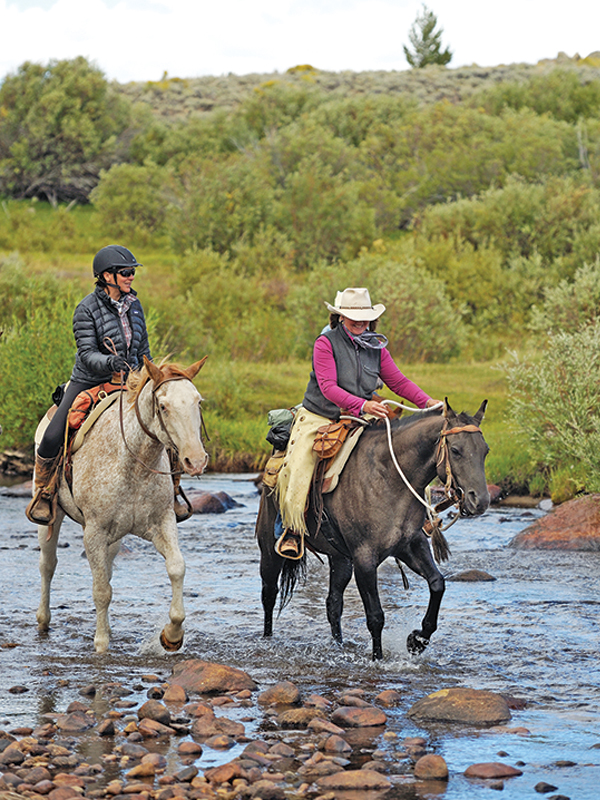
Bobbi Wade of Blue Sky Sage Horseback Riding Retreats prefers foundation-type Quarter Horses. Her string also includes some Quarter Horse draft crosses and Mustangs. Photo: Clix Photography
While researching this article, I gained a new appreciation for the careful planning that goes into operating an outfitting operation. Often, riding vacations are judged on the food, accommodation, scenery, and yes, the horses, but I never really considered how intricate the entire process of building a good string must be. Outfitters put their trust in these horses to carry clients throughout their incredible journeys. In the future, every time I put my foot in a new stirrup, I will remember what went into finding, choosing, breeding, gentling, and training the horse I am about to ride. In any discipline it is important that the horse loves its job, but when carrying a different client every week or sometimes every day is part of the job description, safety is the number one concern and only horses with specific qualities will do.
After missing my riding vacation for the past two years due to the pandemic, my bags are packed and I’m ready to go.
If you’re yearning to return to a holiday saddle, when you do mount up again, remember all the effort that went into providing you with your four-legged trail partner.
Thank you to all of the outfitters for helping me create this article, and for being so honest and thorough in your responses. Happy trails everyone!
For more information, please visit:
- Adventure Horse Trekking New Zealand
- Anchor D Guiding & Outfitting
- Blue Sky Sage Horseback Riding Retreats
- Rancho Las Cascadas
- The Hideout Lodge & Guest Ranch
Related: Trail Riding Etiquette
Check out more Holidays on Horseback.
Main Photo: The horses at Anchor D Guiding & Outfitting are carefully paired with clients for an exceptional horseback holiday. Credit: Anchor D Facebook



